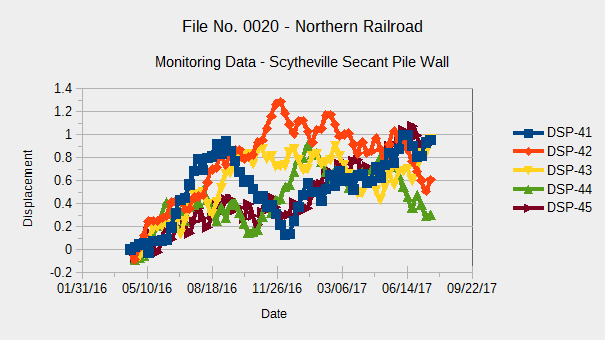Construction often exposes nearby structures and facilities to potentially adverse impacts, especially in the urban environment. While proper project design and construction planning can reduce the likelihood and consequence of hazards, risk cannot be fully eliminated and project stakeholders are typically exposed to residual risks that must be managed. In construction practice, protective systems are often used to mitigate risk by reducing the likelihood or consequences of hazards and monitoring programs are used to control risks that cannot be economically mitigated.
Protective Systems
Protective measures include support of excavation systems, underpinning, shoring, roof protection, sidewalk sheds and other temporary works. These systems substantially reduce the risk to adjacent structures and facilities associated with particular construction-related hazards. However, there are risks associated with each of these systems that must be managed.
See also: Support of Excavation, Temporary Structures for Construction, Underpinning
Construction Monitoring
 Construction monitoring is fundamental to and must serve a risk control strategy that reflects the hazards associated with the work to be performed, as well as the condition and expected behavior of the potentially impacted structures and facilities. Risks are controlled through early detection of deviations from expected performance through monitoring, along with contingency plans that include performance thresholds and corrective measures to be taken before significant damage occurs. A monitoring program may include a variety of means of observation and measurements, including periodic visual and photographic observations of the work and adjacent properties, survey readings and instruments to measure displacement, vibrations, groundwater levels and other phenomena. However, monitoring measures employed without a risk control strategy are unlikely to be effective.
Construction monitoring is fundamental to and must serve a risk control strategy that reflects the hazards associated with the work to be performed, as well as the condition and expected behavior of the potentially impacted structures and facilities. Risks are controlled through early detection of deviations from expected performance through monitoring, along with contingency plans that include performance thresholds and corrective measures to be taken before significant damage occurs. A monitoring program may include a variety of means of observation and measurements, including periodic visual and photographic observations of the work and adjacent properties, survey readings and instruments to measure displacement, vibrations, groundwater levels and other phenomena. However, monitoring measures employed without a risk control strategy are unlikely to be effective.
See also: Construction Phase Services, Risk Management
Pre-Construction Condition Surveys
Pre-construction conditions surveys are among the most common tools for managing risks to adjacent structures associated with adjacent construction. A pre-construction condition survey is a rapid, systematic visual observation and documentation of a potentially impacted structure made prior to construction. A well-executed condition survey will result in a clear baseline document that can be used to evaluate suspected construction damage and expeditiously resolve claims.
See also: Structural & Foundation Investigations
Abutter Services
The owner and constructor of a construction project bear primary responsibility for damage to abutting properties and will manage that risk in a manner consistent with their respective risk tolerances. However, the abutting property owner and occupants will still face some residual risk exposure that may exceed their respective risk tolerances. Therefore, construction project abutters can benefit from retaining a consulting engineer to perform a pre-construction survey, review the protective measures and monitoring program developed for the project and provide additional measures to better align the abutter’s retained risks with their risk tolerance.
See also: Services for Abutters to Construction Sites
By understanding the technical issues and the risk management context of protection systems and monitoring programs, Richard J. Driscoll, Consulting Engineer (RJDCE) can assist owners, design professionals, contractors and abutters specify, design and manage the risks associated with these systems. The practice presents experience planning, designing, peer reviewing and overseeing a variety of protection and monitoring measures on a range of building and infrastructure projects in major cities like New York and Washington, DC. RJDCE is independent of protection and monitoring systems vendors and contractors and can, therefore, provide clients with technology-neutral recommendations that reflect the specific risks and constraints of the project. In addition, RJDCE provides forensic capabilities that facilitate interpretation of monitoring data, damage claim evaluation and development of remedial measures.
